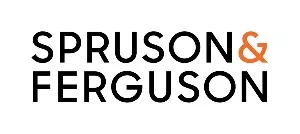- within Privacy and Corporate/Commercial Law topic(s)
- with Senior Company Executives, HR and Finance and Tax Executives
- with readers working within the Banking & Credit, Healthcare and Law Firm industries
Further to our previous article on proposed changes for AI and bitstream related inventions, China has now released revisions that materially affect examination practices and legal consequences for such applications.
On 13 November 2025, China National Intellectual Property Administration (CNIPA) issued Decision on revising the Patent Examination Guidelines (Order No. 84), revising regulations in several key examination areas. The revisions take effect on 1 January 2026 and include significant updates related to Artificial Intelligence (AI) and Bitstream technologies, as summarised below.
Inventions involving AI
- Clarifications on Article 5: Inventions contrary to public order
According to Article 5 of the Chinese Patent Law, patent rights are not granted for inventions that violate law or social morality, harm public interests, or are based on illegally acquired genetic resources. The revised Guidelines provide further clarification on how this applies to inventions involving data processing, algorithms, and business methods.
For such patent applications—particularly those involving algorithmic features or business rules—the implemented methods of data collection, tag management, rule setting, and recommendation decisions must comply with legal provisions, social morality, and public interests. Failure to meet these standards will result in the rejection of the patent application.
Unacceptable examples include:
- Violations of Law: Collecting user data, such as facial recognition and identification information, without the user's knowledge or a declared legal basis for the collection.
- Violations of Social Morality: An autonomous vehicle's emergency decision-making model that discriminates by selecting which individuals to impact in an unavoidable accident based on characteristics such as gender or age.
- Full disclosure of the description
The revised Guidelines provides further guidance and examples on the requirements for full disclosure of AI related applications.
- For AI model development & training applications:
The description must fully disclose the model's essential components – including its modules, hierarchical structure, and connection relationships – as well as the specific steps, data, and parameters required for its training.
- For AI model application & deployment patents:
The description must clearly detail how the AI model or algorithm is integrated into the specific technical field or scenario. This includes specifying the input and output data and explaining their internal relationships to the problem being solved. The disclosure must be sufficient to enable a person skilled in the art to reproduce the technical solution.
- Clarification on assessing inventiveness
The revised Guidelines further clarifies the criteria on accessing inventiveness of AI related applications. According to the revised provision, when assessing inventiveness, the contribution of algorithmic or business method features must be considered if they exhibit functional mutual support and interaction with the technical features of the solution.
Inventions involving bitstreams
The revisions offer new guidance on the eligibility and drafting of bitstream-related applications.
- Eligibility of subject matters
- Unpatentable: A claim directed solely to a bitstream itself, or where the entire claim body pertains only to a simple bitstream.
- Patentable: If a specific video encoding method that generates a bitstream qualifies as a technical solution under the Patent Law, then the methods for storing or transmitting that bitstream, as defined by this specific encoding method, as well as the computer-readable storage medium containing the bitstream, are also considered patent-eligible subject matter.
- Drafting requirement
- Permissible Claim Types
A patent application involving a bitstream generated by a specific video encoding method can be drafted as a storage method claim, a transmitting method claim, or a computer-readable storage medium claim.
- Disclosure Requirements
The description must provide a clear and complete disclosure of the specific video encoding method. Where protection is sought for storing/transmitting the bitstream or related storage media, the description must also explicitly describe these embodiments to support the claims.
How we can help
Our team in Beijing and Hong Kong work closely with clients globally to identify proactive patents strategies and ensure their applications are tailored to China's requirements, and maximise their rights and commercial outcomes.
If you have any specific concerns or questions in relation to regulation of the AI-related application in the Guidelines, please feel free to reach out to us.
The content of this article is intended to provide a general guide to the subject matter. Specialist advice should be sought about your specific circumstances.



